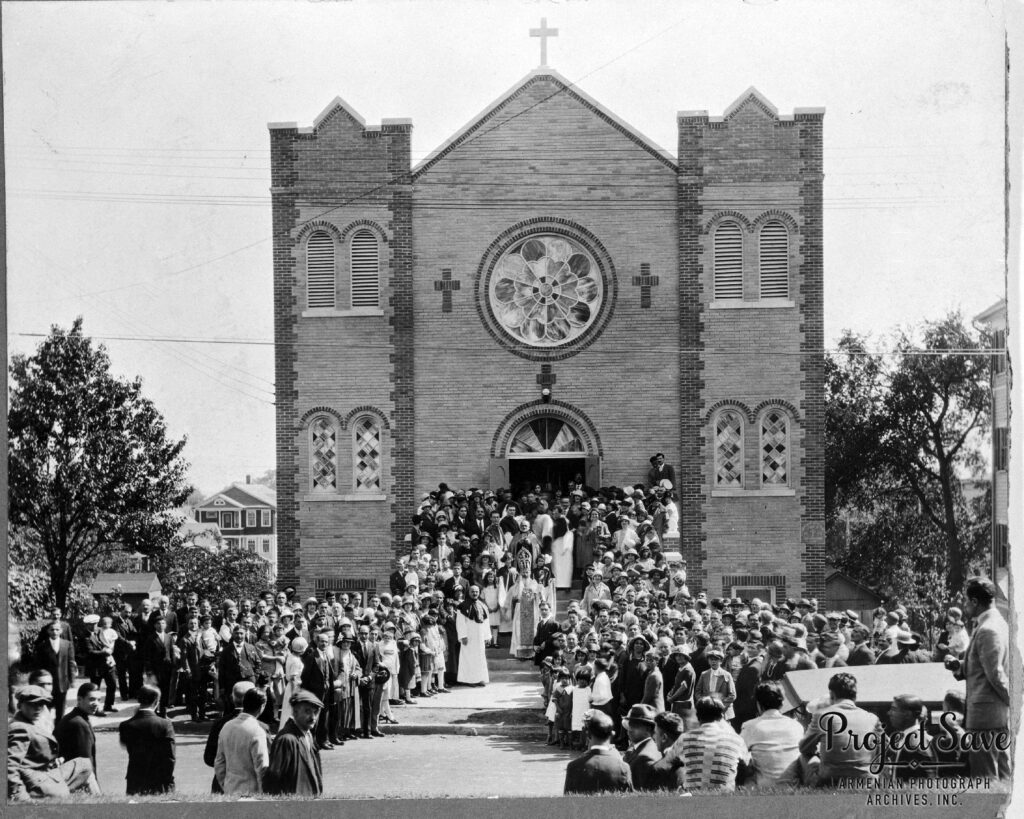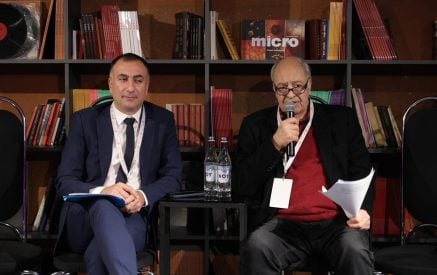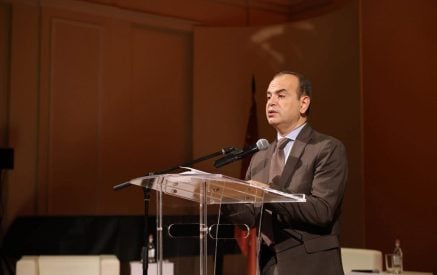By Stepan Piligian
It is a topic that consumes many of our church leaders globally, nationally and locally. Many of us lie awake some nights searching for the answer—how do we stop the obvious decline of many of our parishes? Each region of the Armenian nation has a different experience. The challenges in Armenia are generally associated with the impact of 70 years of Soviet rule, when the church was marginally tolerated but unable to provide public leadership. In the diaspora, we tend to attribute the decline of our parishes to the external impact of secularism and assimilation.
The former has created a material society, at its worst obsessed with progress in a Godless state. Our children are separated from God in their daily lives, except in their family life. It is a struggle between two distinct worlds on this earth. Assimilation is associated with a separation from one’s Armenian roots, either by choice or due to the environment. These are real challenges and one of the reasons I advocate for a decentralized administration of our church hierarchy. Specific dioceses should be empowered to make adjustments to address the impact of these problems in a given locale. Unfortunately, our church remains a one-size-fits-all institution, and we suffer the consequences.
Read also
Many Armenians blame intermarriage as a contributor to our decline. My perspective is that intermarriage, in and of itself, is not a direct contributor, because identity in the diaspora is a choice. Certainly, it adds complexity to the challenge, but a welcoming church that understands the implications of intermarriage can function with success. We have yet to address this matter in a meaningful way, other than encouraging the Armenian spouse to bring their non-Armenian partner to church. This reflects a lack of understanding of how to fulfill needs and build identity. Intermarriage is a sociological reflection of ethnic cultures two-three generations removed and should be embraced, not ignored.
Our parishes were built as a result of migration patterns. The first wave that built most of the churches in America was a direct reflection of the early 20th century immigration to these shores. Large communities such as the New York metro, Philadelphia, Boston, Detroit, Los Angeles and Fresno were established by the survivor generation from the Armenian Genocide. Other communities were built in places such as Indian Orchard, St. Louis, Chicago, Worcester, Syracuse and Niagara Falls by the same generation, reflecting employment patterns. It’s how Armenians built a presence in tiny Whitinsville, Massachusetts.
The second wave of church construction reflected migration from within the U.S. and other countries to places such as Texas, Florida, Minnesota and other states not traditionally associated with Armenian communities. Many of these communities started as mission parishes and evolved into permanent faith communities. As a direct result of the church division, a duplication of parishes occurred in many legacy communities. Prior to the tangible impact of assimilation, these redundancies were tolerated, and a dedicated core of parishioners supported these churches.
The impact of population shifts and assimilation, or at least estrangement from the church, has displayed a new reality in some areas. The small communities with a limited population base are most heavily impacted. Parishes in communities such as Niagara Falls, Syracuse (where the Prelacy church closed), Albany, Springfield and New Britain are experiencing visible evidence of decline, as the number of the faithful is limited relative to the number of parishes to support. This is a painful and difficult process for the hundreds of dedicated people who have devoted their lives to the Armenian church yet feel powerless as they witness this slow decline. We should feel compassion for the remarkable people of these communities who are trying to manage a situation out of their control. Yet the larger communities are not exempt from this decline. While the population base of Armenians serving many regions has increased, the number of children in Sunday School has declined, as well as church attendees. If you look at attendance relative to the population increases, the decline is even more significant. The difference?
Large communities can mask the problem better by sheer volume, as immigration from the Middle East and Armenia has replenished losses. In a small community of 75 families, the absence of 50-percent can be devastating and impact the services offered. In a large community of 700 families, 50-percent participation will still allow the critical mass to reasonably fill the church and have a functioning Sunday School and activities. This is not a criticism. We are all on this journey together.
It may be of value to discuss one example in more depth. St. Stephen’s parish in New Britain, CT is one of the oldest parishes in America, with its consecration in 1926. Prior to 1933, it was the only parish in New Britain. As a result of the schism, the Holy Resurrection parish was formed nearby and later built a beautiful facility on Stanley St. As is quite common in our complex relationships, you either went to the “Tremont St.” or “Stanley St.” St. Stephen’s was one of the unaffiliated parishes from 1933-56 and joined the Prelacy at its formation. Unfortunately, St. Stephen’s has experienced several communal challenges, resulting in a loss of parishioners.
Facing the common issues of indifference and secularism, the parish today is held together by a few very dedicated servants of the church. Their story is not unusual, but if you live there it feels unique. I feel for the painful experiences of those remaining. They are all good people who have done what they believe is right. Some of the parishioners now attend Holy Resurrection, which is led by the dynamic young Rev. Fr. Haroutiun Sabounjian. I am thankful that they have chosen to continue in the Armenian church rather than join many in almost every community who simply drift away. This parish is more than an example of our challenge. It is also very personal. My grandfather Takvor Harotian was a charter founder of the church, and many of my relatives, particularly the Kevorkian family, served there for many decades. My mother was raised in that parish, and I remember many Sundays attending Badarak holding the hand of my dear grandfather. It will always be a special place. Ironically, after years of separation, relations between the Prelacy and Diocesan parishes in New Britain have never been better. At least, the faithful have a feeling of camaraderie that has been missing for so long in our churches. Intellectually, we may understand that two churches in a small community is not a natural state, but the decline of any parish is painful.
The current status of our churches begs the question—is it a lack of funding, or is it a lack of faithful? I am reminded of what a mentor of mine in the church told me many years ago. Our parish at that time was suffering from a financial deficit, and the board of trustees, the parish council, was debating options. This individual stated that if we are doing the work of God, we will never have a budget deficit. His point was, of course, that money is needed, but it comes more naturally when people are in a faith community and give from their heart. As we began to focus on the church’s work, our deficit disappeared. I learned something as a young man from that experience.
It taught me that the most important area of focus in maintaining an Armenian Christian community is sustainable communal relationships. This is why our Lord created His church. We don’t go to a parish for the bazaar and picnics. They are instruments to sustain our parishes and vehicles for bonding. What we have in common is our belief in our savior Jesus Christ, according to the traditions of the Armenian church. If that is true, how we treat, greet and support each other will make the key difference. If our churches are focused only on fundraising rather than Christian outreach, we will fail. When a parish is symptomatically in decline, the causes can be traced to early on. Unresolved conflicts or drifting from the true mission of the church seem benign in the moment but erode the church foundation over time.
Everywhere in this country there are humble and dedicated faithful doing their utmost to carry out the mission of the church. We should pray for their wisdom and strength to keep the focus on Armenian Christian relationships. The Soorp Badarak is replenishing and nurturing for our souls, but too often we attend out of stressful obligation as we seek that nourishment. I don’t think St. Stephen’s has a financial problem, but rather is seeking the faithful. Many parishes can recover from decline if they focus on building a community of Armenian faith. Some will not. We don’t know what the future will bring but pray for the people of St. Stephen’s and all parishes struggling with sustainability. We have many wonderful stories of revitalization when parishes find the right leadership and attract new parishioners. It can happen anywhere. This is the power of prayer and understanding why we have parishes.
We need not fear change but rather stagnation from a lack of change. It is my hope that we can apply this approach to wherever we call home. Encourage others to discover God in their lives and the joy of a Christian Armenian identity. Don’t focus on money. Share your passion of belonging to a Christian community. When their hearts are filled, the funding will appear. This is a lesson we can all learn from our ancestors. They built these communities with little education, limited funds but extraordinary faith. Today, as a result of their gifts, we are generally well educated, considered wealthy yet are challenged in faith as a community. Are our lives truly better? There is no need to eliminate what we have earned—simply apply it towards a deep and eternal foundation.
The Consecration of Saint Stephen Armenian Apostolic Church (named after the first Christian martyr) Tremont Street, New Britain, Connecticut, May 1926 (Project SAVE Photo Archives)




























































